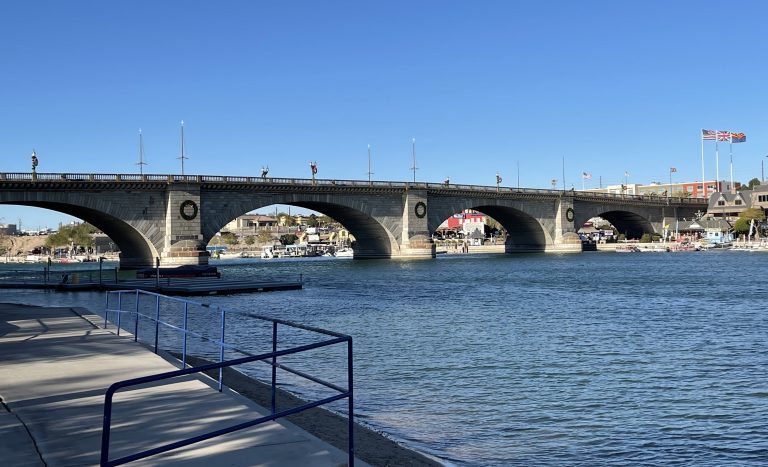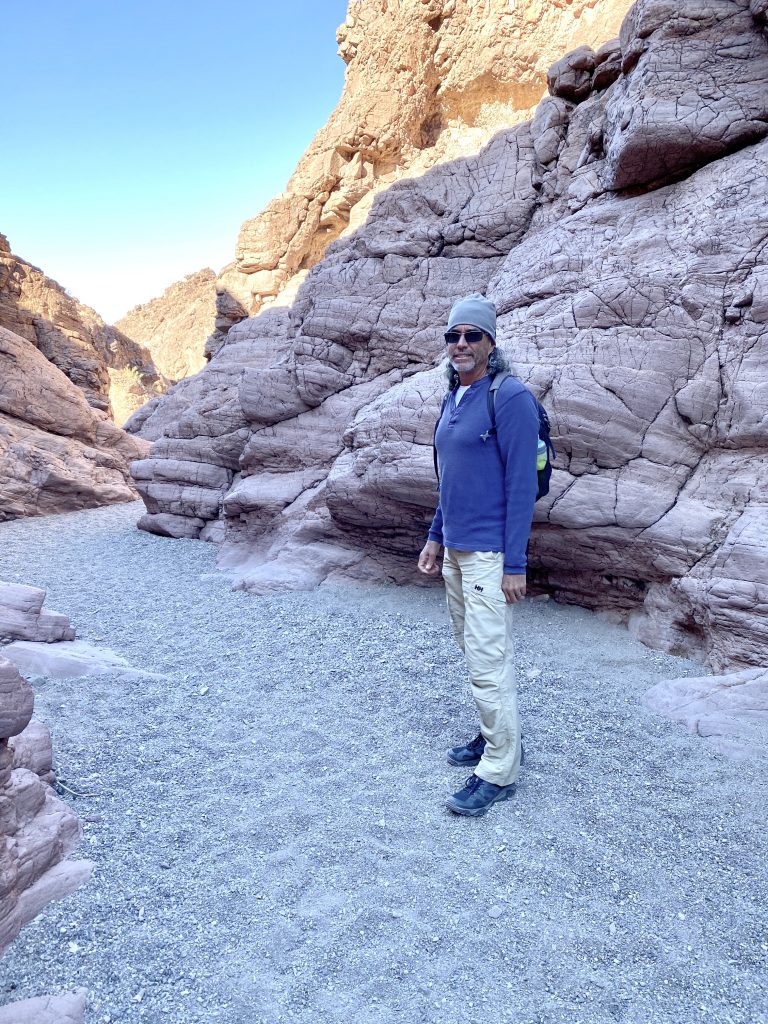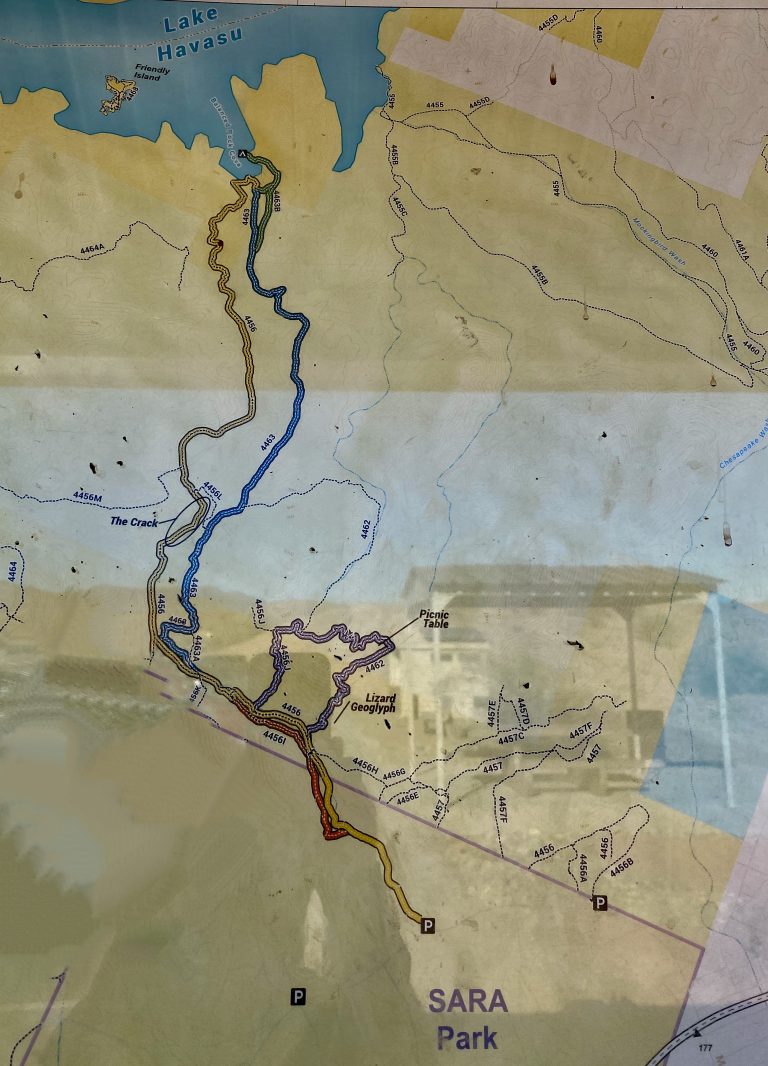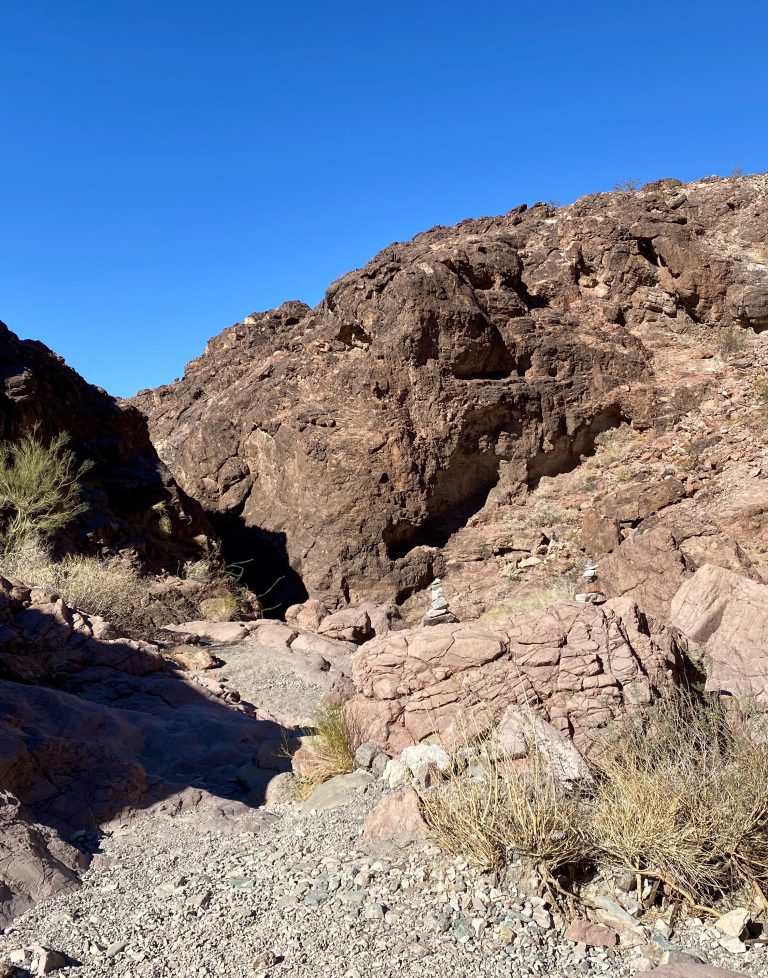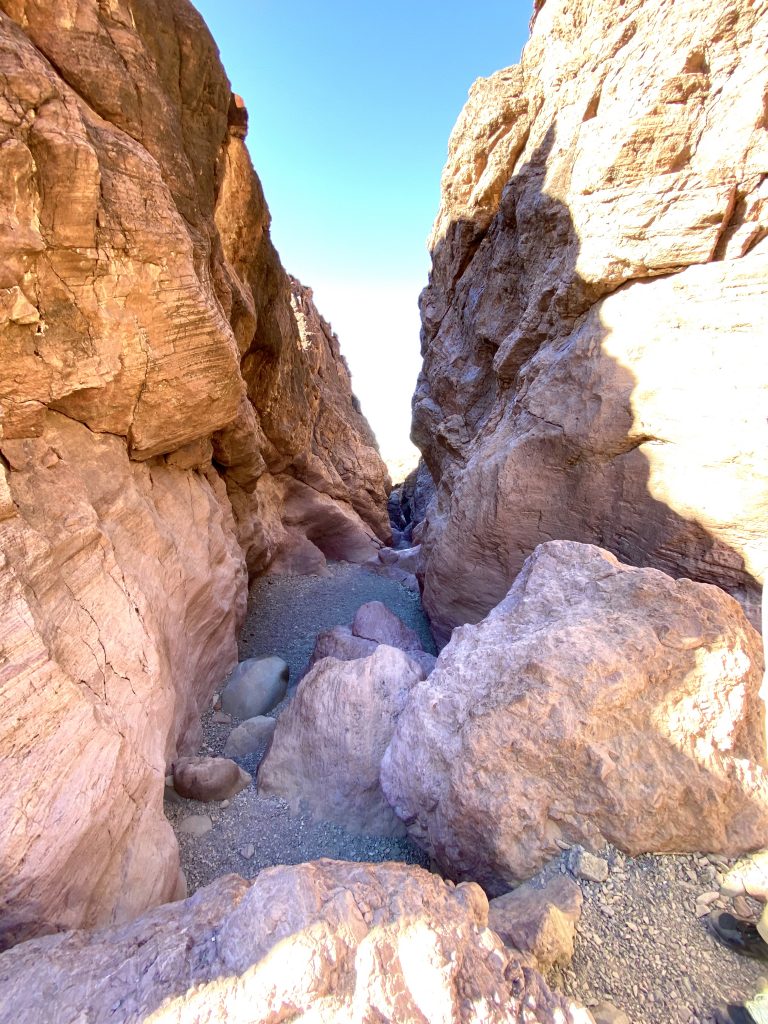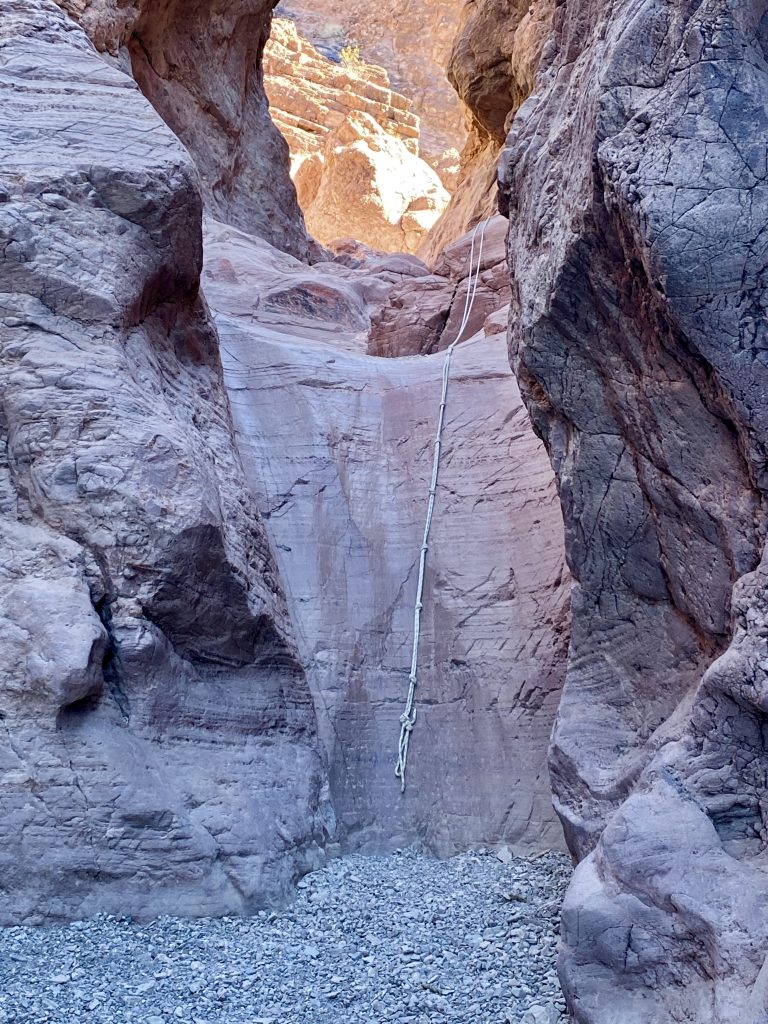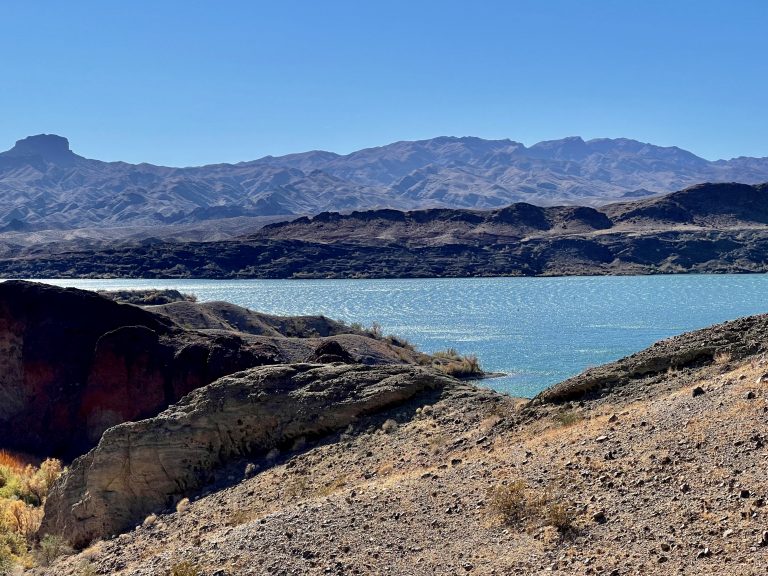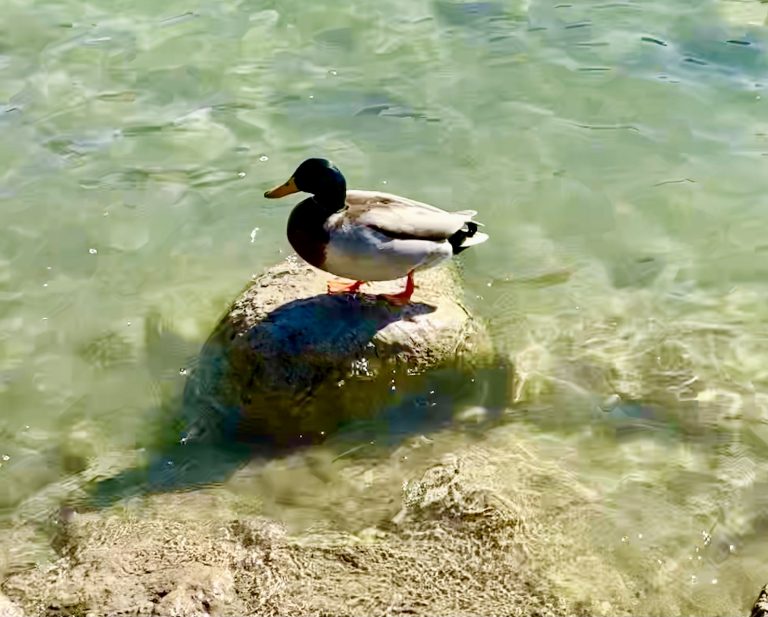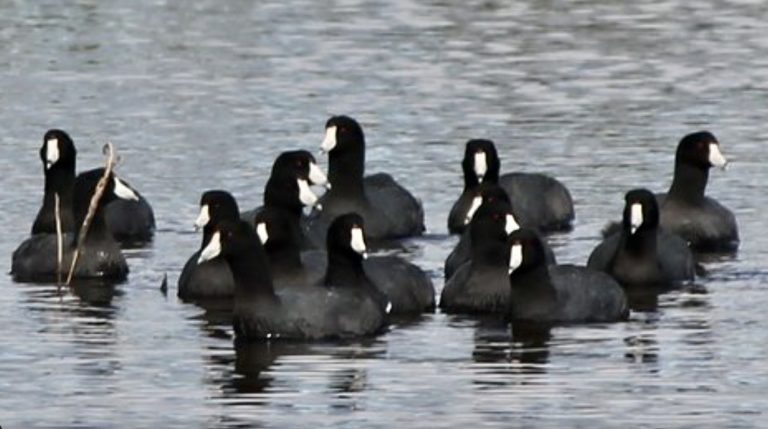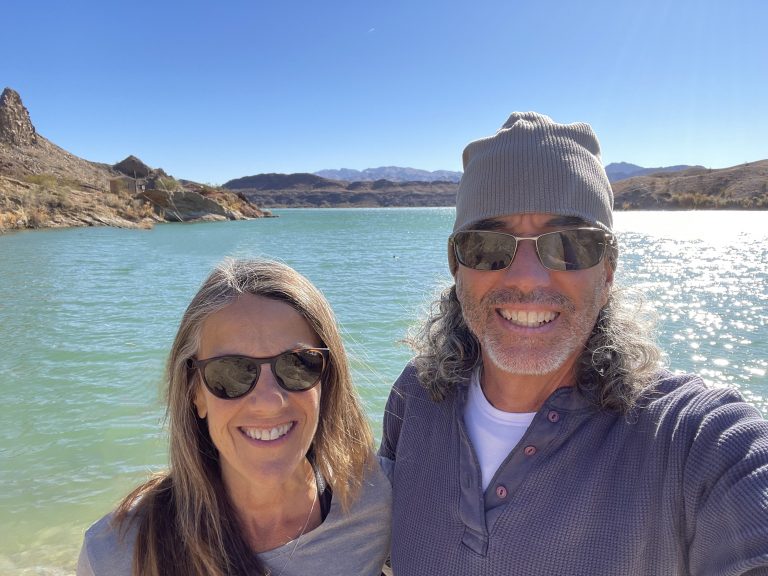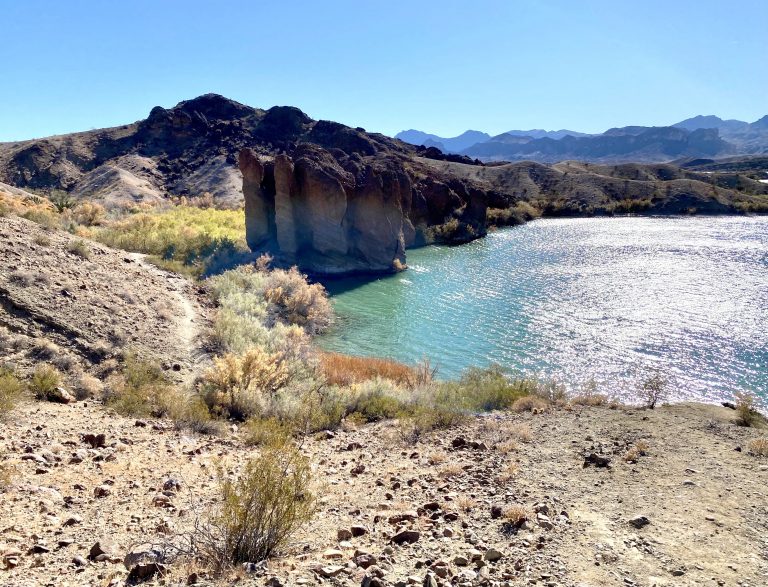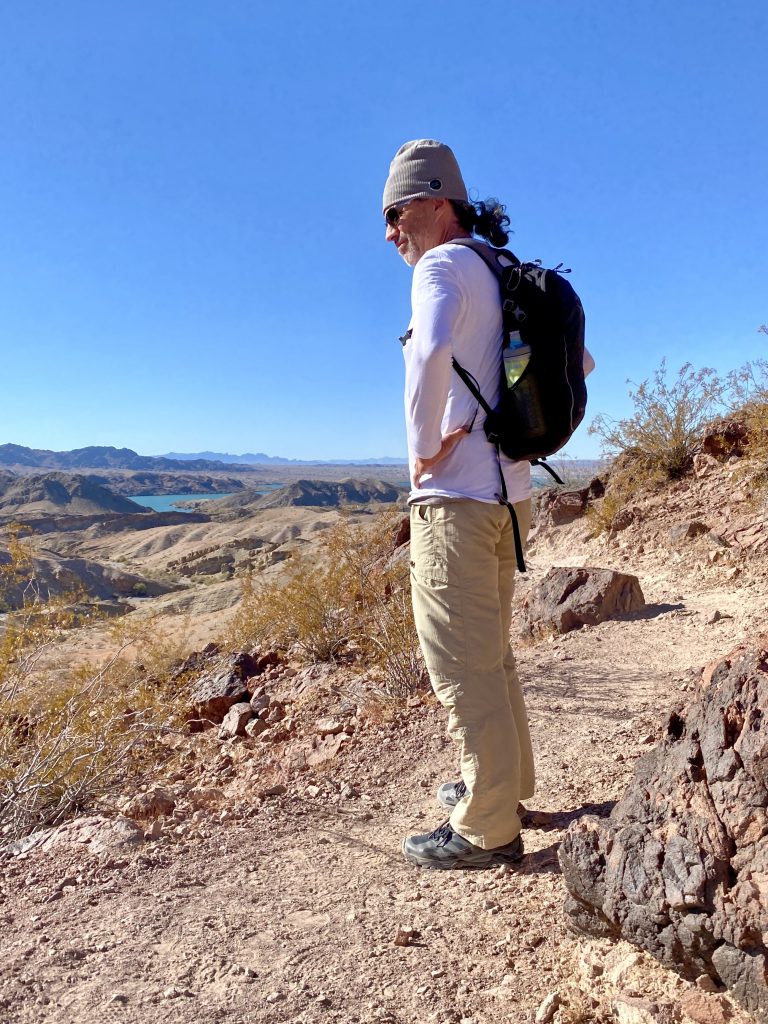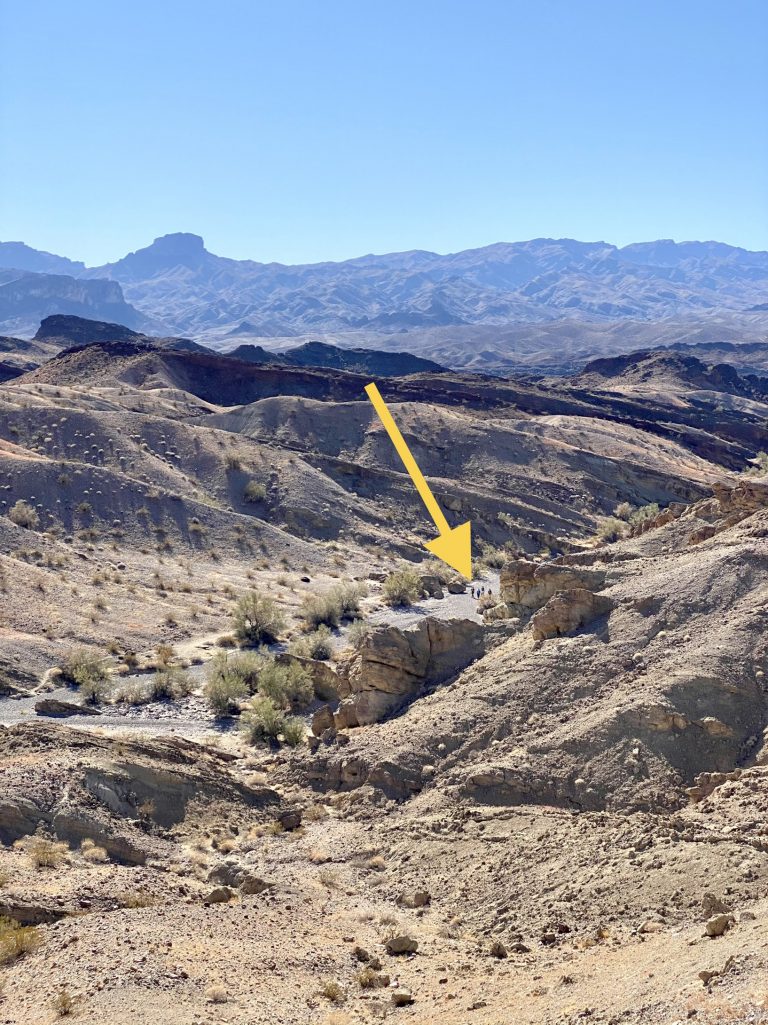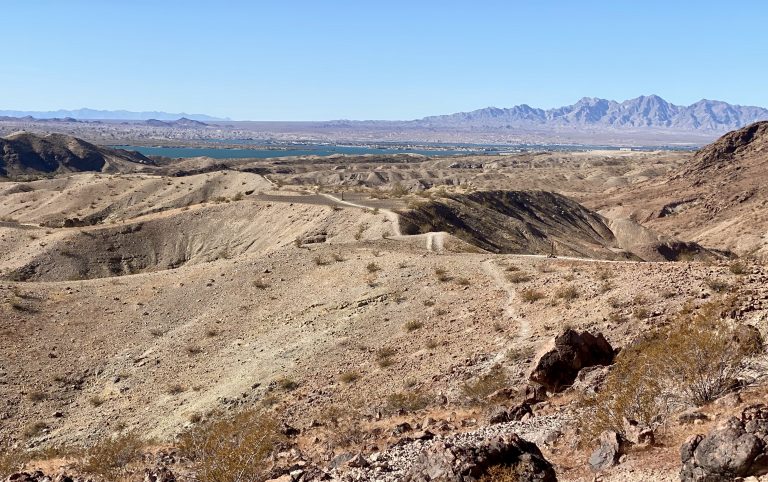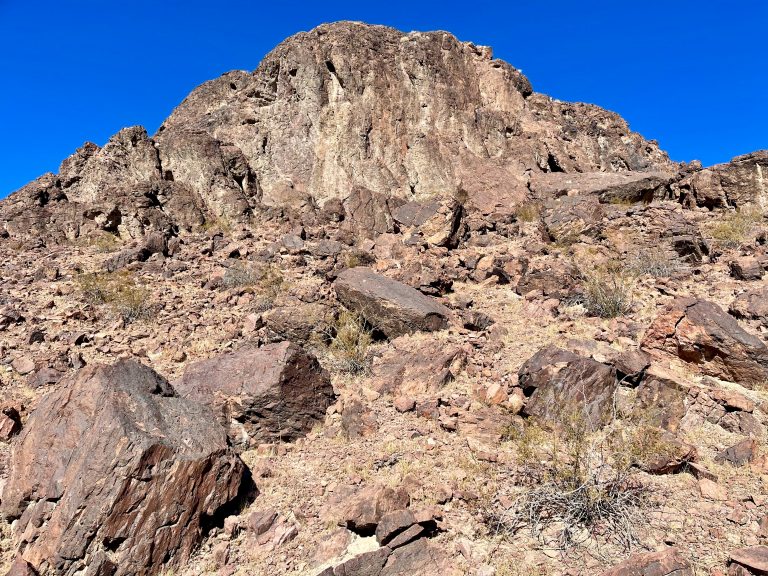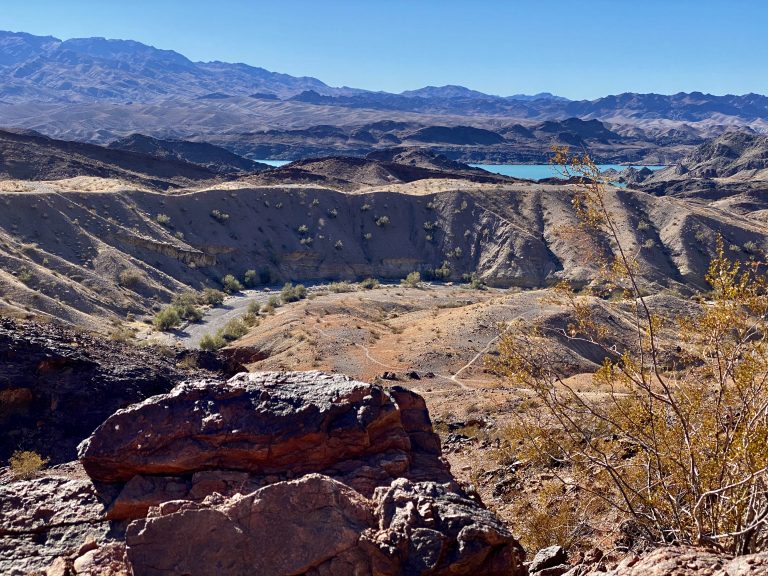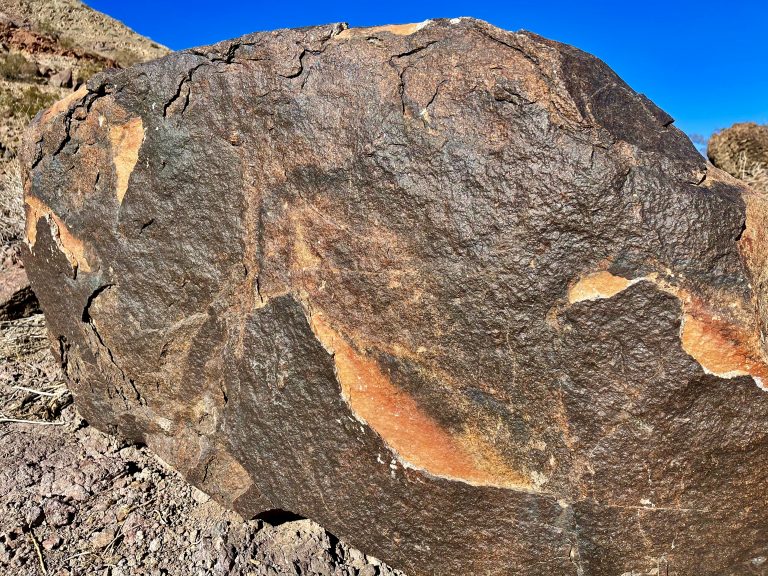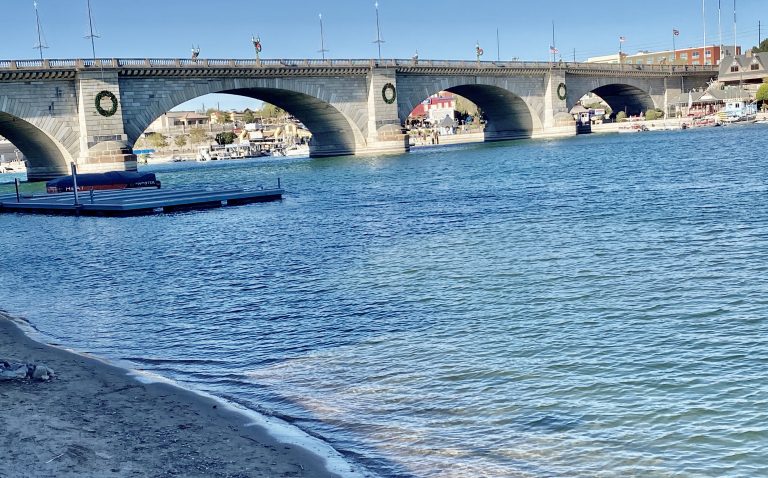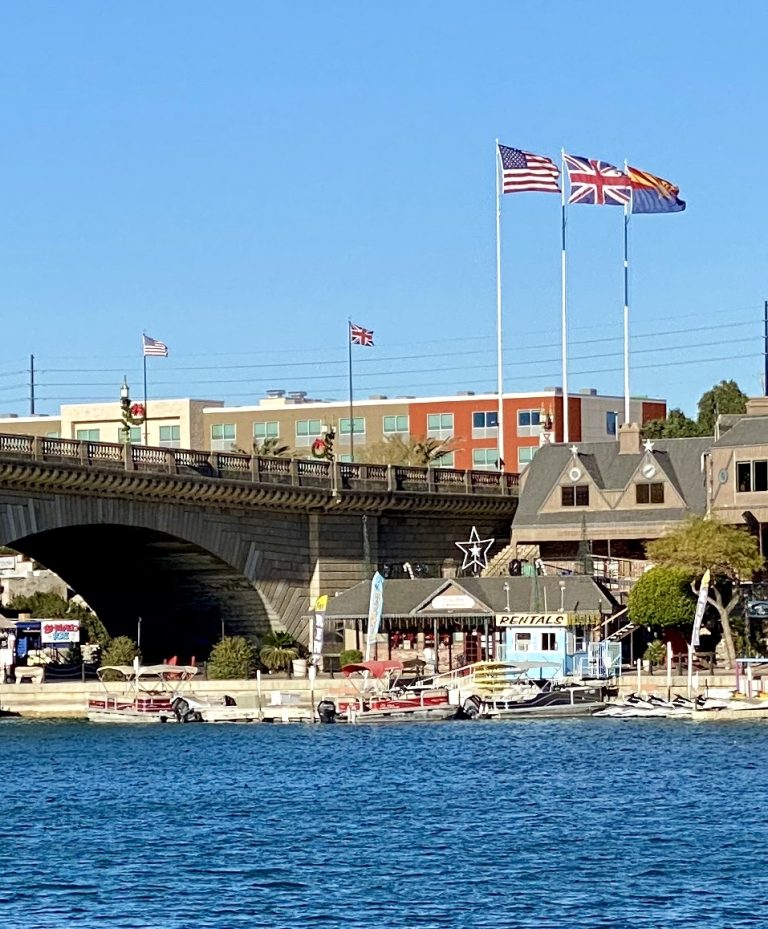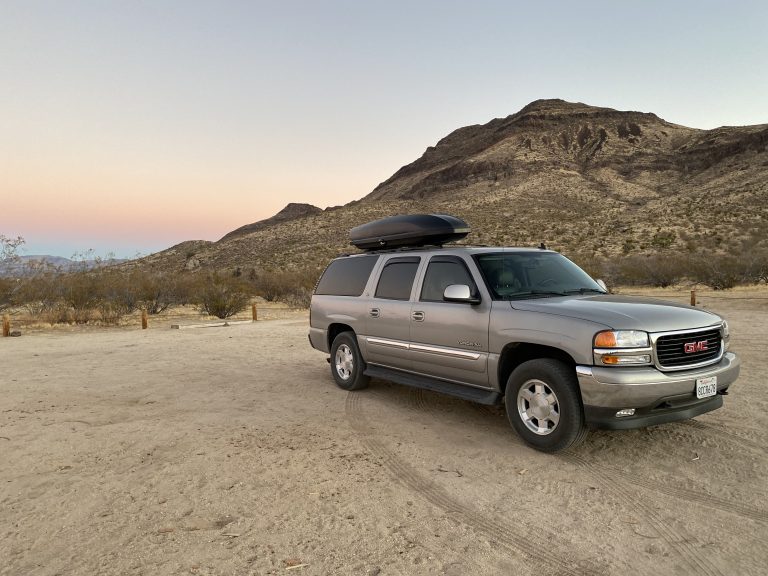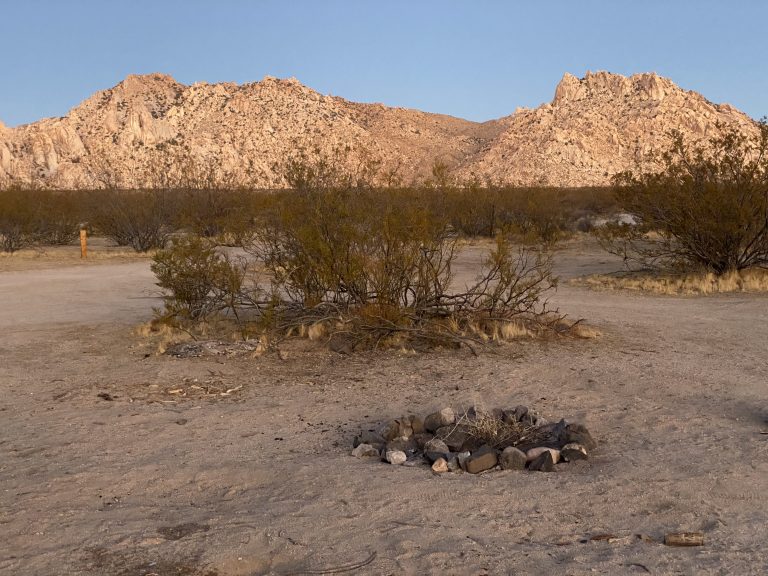December 18, 2020
It was cold when we got up, somewhere not much above freezing. Parker, Arizona looked like a working-class town that was unhurried but still had things to do. We stopped for coffee at a kiosk but apparently Parker doesn’t do coffee well. We find local drive-thrus often have the best coffee in town—if so, Parker simply wasn’t interested in coffee.
It was odd now being on the other side of the Colorado River—our home state of California was in view just across the bridge. Leaving Parker, as we followed highway 95 north, we paralleled the river and the California state border but here in Arizona, we were in the land of Covid-blasé and gas that was cheaper by at least a dollar per gallon. After an hour or so of driving, we reached our first destination, SARA Park. (We never did find out why it was in all-caps—and the hike there was called Sara’s Crack but we liked that name even less).
Susan had found the five-mile hike that appeared to check all our boxes—the trail included a boulder-strewn wash, a slot canyon, the lakeshore, views of mountains and the town of Lake Havasu, a steep ridge and colorful rock formations. We layered up in the cool sun, both donning hats for the chill and potential wind.
The initial section of the trail led from the parking lot down a long hard-to-walk-in sandy wash.
The wash eventually came to the relatively short slot canyon that required things like shimmying down a rope, sliding down a smooth rock and wiggling down a ladder.
We were both grinning like kids. The slot section was challenging and so much fun we wished there were more of it.
Once out of the slot, we hiked alongside the wash as the trail wound up and around sandstone hills and low cacti.
The trail then surprised us with a smaller second slot canyon. Hooray! Another one!
As we climbed out of the second slot, the view opened up to Lake Havasu (a dammed section of the Colorado River) and we felt the strong wind from the water. The contrast from the browns and grays of the land to the deep blue water was stunning.
We walked another short trail down to the water’s edge where we rested on some rocks.
Instantly, a lone mallard came over expecting a handout but soon left disappointed. A small flock of coots bobbed on the small waves. Coots are odd ducks (rails, actually) that look like black footballs with a short neck, a striking white forehead and beak, and red eyes. Soon one of the coots—the boss, I supposed—angrily chased off any others who came near him. His menacing posture (for a duck) constantly scared the rest away. I tried to understand the social order but couldn’t figure out why the other coots were so afraid of The Boss. He was the same size and seemed pretty much identical, but his angry attitude had them all cowed and even the bigger mallard got chased off. I thought of how humans can be similar—a bully, scaring others and making them do the bully’s bidding. All it would take though, is one coot to stand up to the bully to free the flock, but none did. So it often is with people.
We rested at the shore for a long while feeling the wind. It was 60 degrees with a clear blue sky and it was just us and the ducks. Finally, we made our way up from the lake.
The hike was a loop (our favorite because we don’t have to retrace our steps) and the second half was completely different. We climbed up steep hillsides until the full force of the wind hit us, nearly knocking us down at one point. We were no longer protected by the canyon walls and instead were climbing a ridge overlooking them. The ridge narrowed at some points to only two or three feet wide, with 70-foot drop-offs on either side. Along the trail, sickly looking cacti tried to survive in the super-dry terrain, spotted with black boulders that looked like they’d been burned by the intense sun that makes the area see frequent 110-120 degrees days each summer. We trudged uphill keeping our eyes out for bighorn sheep but saw none. We eventually climbed 500 feet before finally descending back into the wash for the last mile, sheltered from the wind. We snacked back at the truck and refilled our water bottles before heading into Lake Havasu City, a few miles away.
Lake Havasu owes most of its existence to chain saws, though there’s no forest for a hundred miles. Robert McCulloch made his fortune selling his brand of chainsaws around the world and decided that the resort town he was developing, Lake Havasu City, needed to attract more people. So, in 1968, he did what anyone would have done and bought, dismantled brick-by-brick, shipped and rebuilt the entire London Bridge that once crossed the Thames River in London. He figured a giant British bridge in the middle of the desert would attract people. A channel was cut through a peninsula jutting into the Colorado River and the bridge placed to cross it. The bridge quickly became a popular attraction and is now the second most popular tourist attraction in the state—the Grand Canyon is the first. It wasn’t long before parks and shops were built around the bridge and, as McCulloch hoped, thousands of people came to Lake Havasu city to buy property. It’s odd to see something as ornate (the lamp posts were made from melted French cannons a couple of centuries ago) and decidedly British in a desert town in Arizona, but McCulloch’s gamble paid off. The city feels successful with dozens of RV parks and dealers, off-road vehicle rentals, and many expensive houses along the river.
In the Mohave, we turned off the busy interstate onto a small road, then onto a dirt road and found a perfect camping spot among the sagebrush. We had a light dinner as the wind whistled outside and we planned the next day’s adventure.

